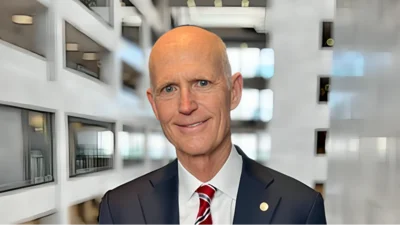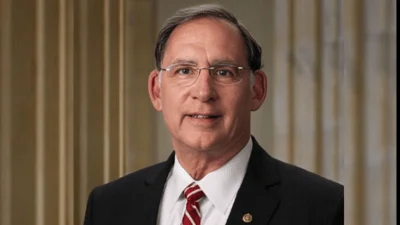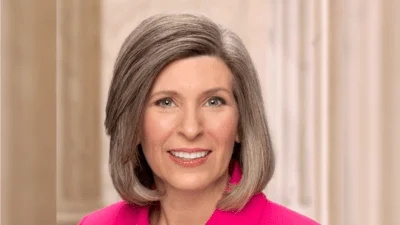Congresswoman Betty McCollum (D-MN), Chair of the Interior, Environment, and Related Agencies Appropriations Subcommittee, delivered the following remarks at the Subcommittee's hearing on the fiscal year 2020 budget request for Environmental Protection Agency:
Good morning, this hearing will come to order. Today, the Interior-Environment Subcommittee continues with its series of budget hearings for the fiscal year 2020. This morning, we will hear about the president’s budget request for the Environmental Protection Agency.
Joining us this morning is Administrator Andrew Wheeler. With him today is EPA Chief Financial Officer Holly Greaves. We saw Ms. Greaves last year when EPA presented its budget request for FY 2019. However, I believe this is Mr. Wheeler’s first appearance in the House, and the first before Congress in his new role, after being confirmed by the Senate a little over a month ago.
So, first, congratulations to you, sir, on your confirmation, and welcome to you both. Mr. Wheeler, I look forward to having a more productive and collegial relationship with you than with your predecessor.
The Environmental Protection Agency has an essential mission. The dedicated employees of the EPA work every day to protect the human health and the health of our environment. They are the defenders of our clean water and clean air, and they protect Americans from exposure to toxic chemicals.
Sadly, the president’s budget for fiscal year 2020 completely fails to support the EPA’s mission. President Trump requested just $6.1 billion for EPA, which is $2.8 billion below the FY 2019 enacted level of $8.9 billion. This request is a cut of more than 31 percent below the FY 2019 enacted level. That is the largest proposed cut to any cabinet-level agency in the government.
This budget:
* proposes to cut EPA’s research budget by 34%;
* cuts State Revolving Funds, which finance clean water and drinking water infrastructure, by a combined 30%;
* eliminates funding for programs that prevent exposure to toxic substances like lead paint and radon; and,
* cuts $30 million for programs that removes lead from drinking water at schools and homes.
It would eliminate funding for most of the regional watershed activities, including Long Island Sound and Puget Sound. The budget proposes a 90% cut for Chesapeake Bay restoration and the Great Lakes Restoration Initiative.
Now, the President recently flip-flopped on his plan to cut GLRI. He used Great Lakes funding to get applause at a Michigan rally. But that doesn’t change the fact that, for 3 years in a row, President Trump has proposed to slash funds for the Great Lakes and Congress has ignored him and fully funded the program.
Administrator Wheeler, I’m not sure if he’s told you if he wants you to cut something else now instead of the Great Lakes? Hopefully it won’t be further cuts to the Environmental Justice work, which is already reduced by 60% in this budget.
EPA programs for Indian country don’t fare any better. Overall, there is a 28 percent cut to programs serving tribes for clean water infrastructure, the handling of hazardous waste, and monitoring and protecting air quality.
This Administration talks all about cooperative federalism, but the budget request once again proposes to cut Categorical Grants by 46%. States and tribes rely on these funds help to operate their delegated air, water and waste. Some might say this budget tells the states and tribes to go fund themselves.
Fortunately, for the last two years, Congress has rejected these disastrous proposed cuts to EPA’s budget on a bipartisan and bicameral basis. I imagine that’s what we’ll do again this year. So rather than spending all our time today focused on an unrealistic budget request, I plan to examine what EPA has been doing with the money that we have already appropriated. Because, frankly, a lot of EPA’s actions don’t make sense, or worse, appear to fly in the face of Congressional directives.
EPA’s understaffing and misguided policy priorities mean that the agency is failing to deliver the basic protections for human health and the environment that the American people expect. For example, instead of safeguarding our families from the threats posed by toxic chemicals, EPA leadership has tried to bury, delay, undermine, or ignore the work of its own scientists for chemicals like methylene chloride, formaldehyde, and chlorpyrifos.
Despite level funding for the past several years, we have seen a sharp drop-off in enforcement activity at the agency. This appears to be the result of an exodus of enforcement personnel whose positions haven’t been back-hired, combined with a new series of bureaucratic hoops that enforcement agents must jump through.
Finally, let’s talk about climate change. When it comes to pollution from cars, instead of working with the States and American car companies to come up with a win-win compromise on fuel economy and greenhouse gas emissions standards, the Administration has pursued a path that even the auto industry opposes.
And when it comes to emissions of Hydrofluorocarbons, some of the most potent greenhouse gases out there, senior EPA officials are opposed to the President submitting the Kigali Amendment to the Montreal Protocol for Senate ratification. This amendment would phase out this older class of refrigerants with a new class of less harmful ones.
Ratification is not just supported by the environmental community, but also by the National Association of Manufacturers, the American Chemistry Council, and the U.S. Chamber of Commerce.
Apparently, the only people who seem to think these EPA policies are good ideas are a few ideologues in the Administration. The American people deserve better than this. The EPA’s mission is to protect public health, not the bottom lines of polluters. This subcommittee will be doing its part to make sure the EPA lives up to its mission.
I would now like to yield to our Ranking Member, Mr. Joyce, for his opening remarks.
Source: U.S. Department of HCA









